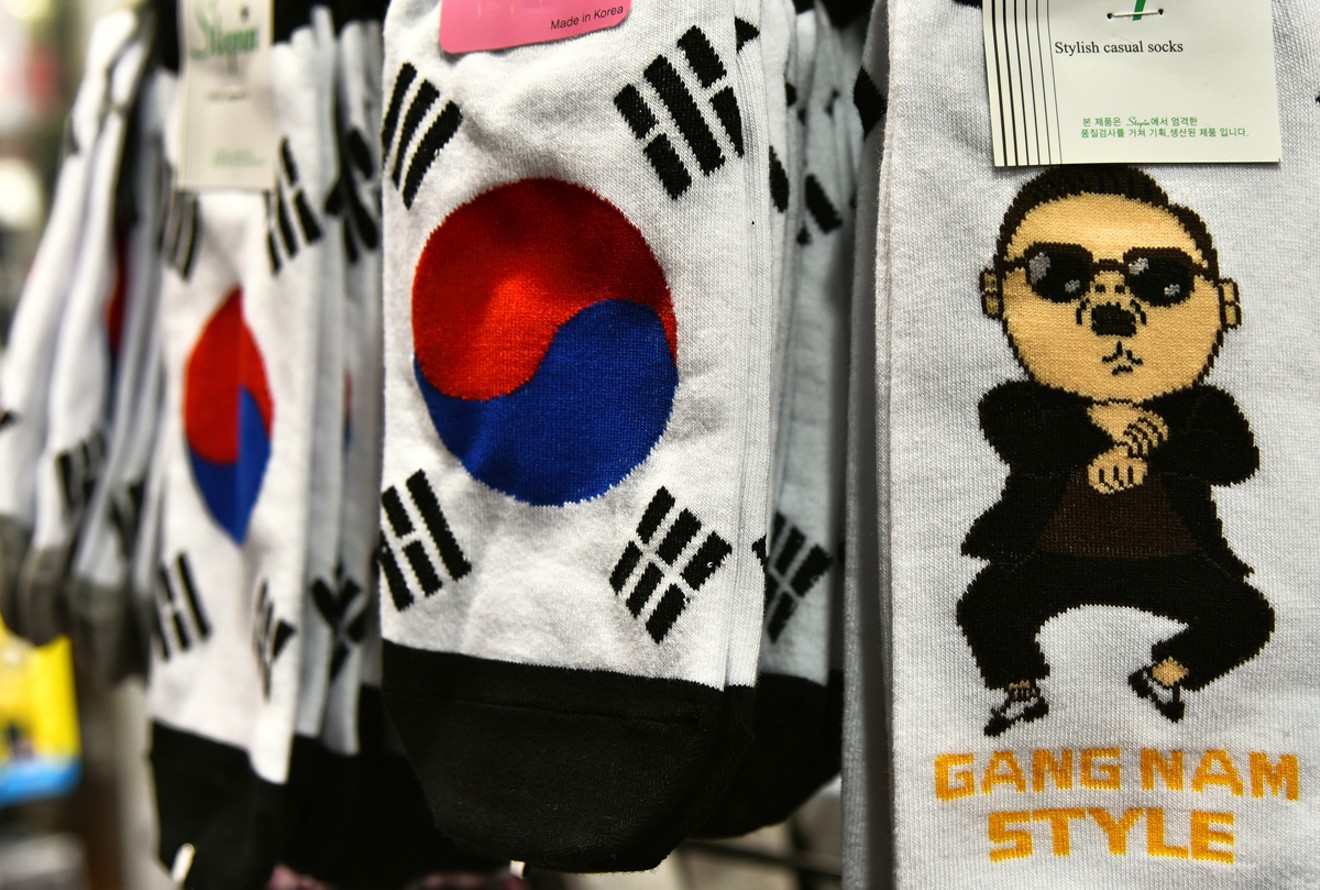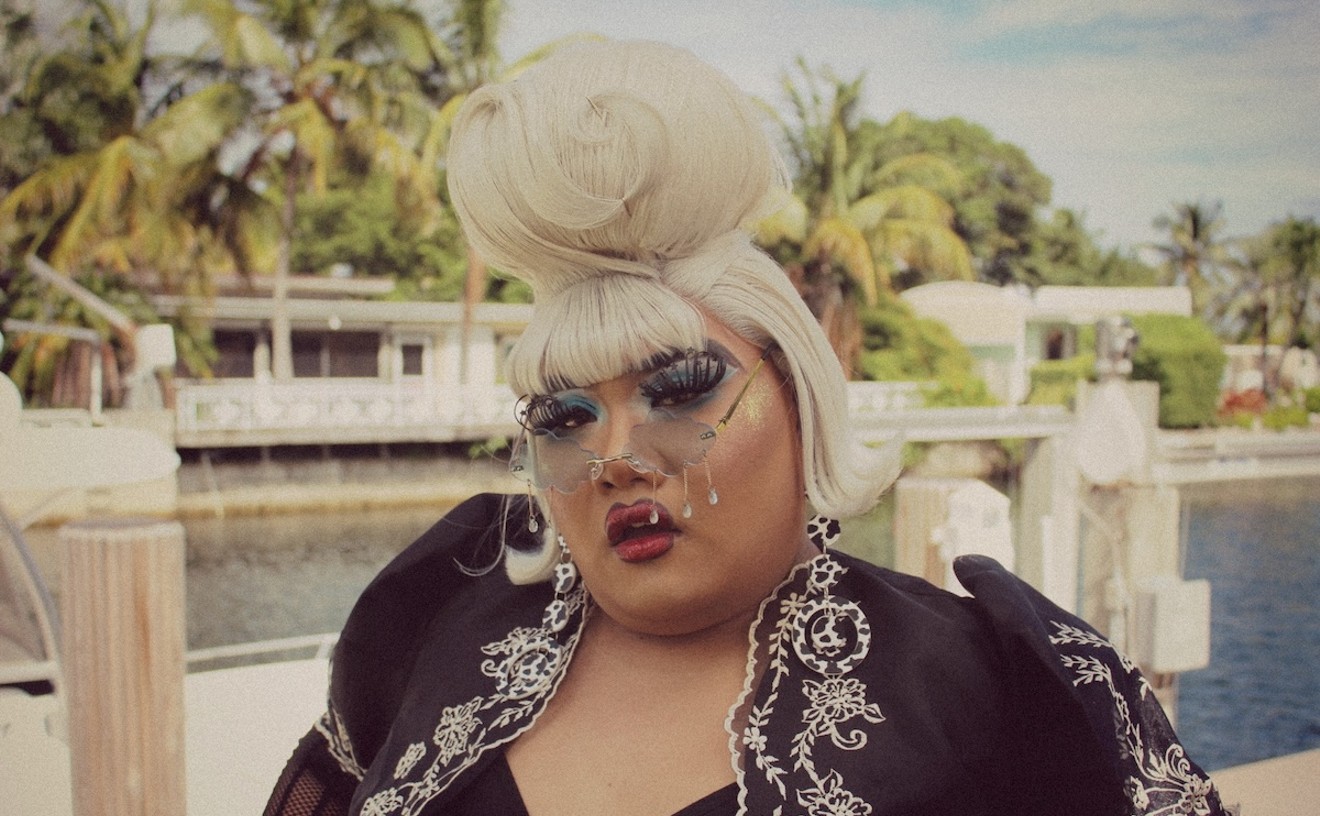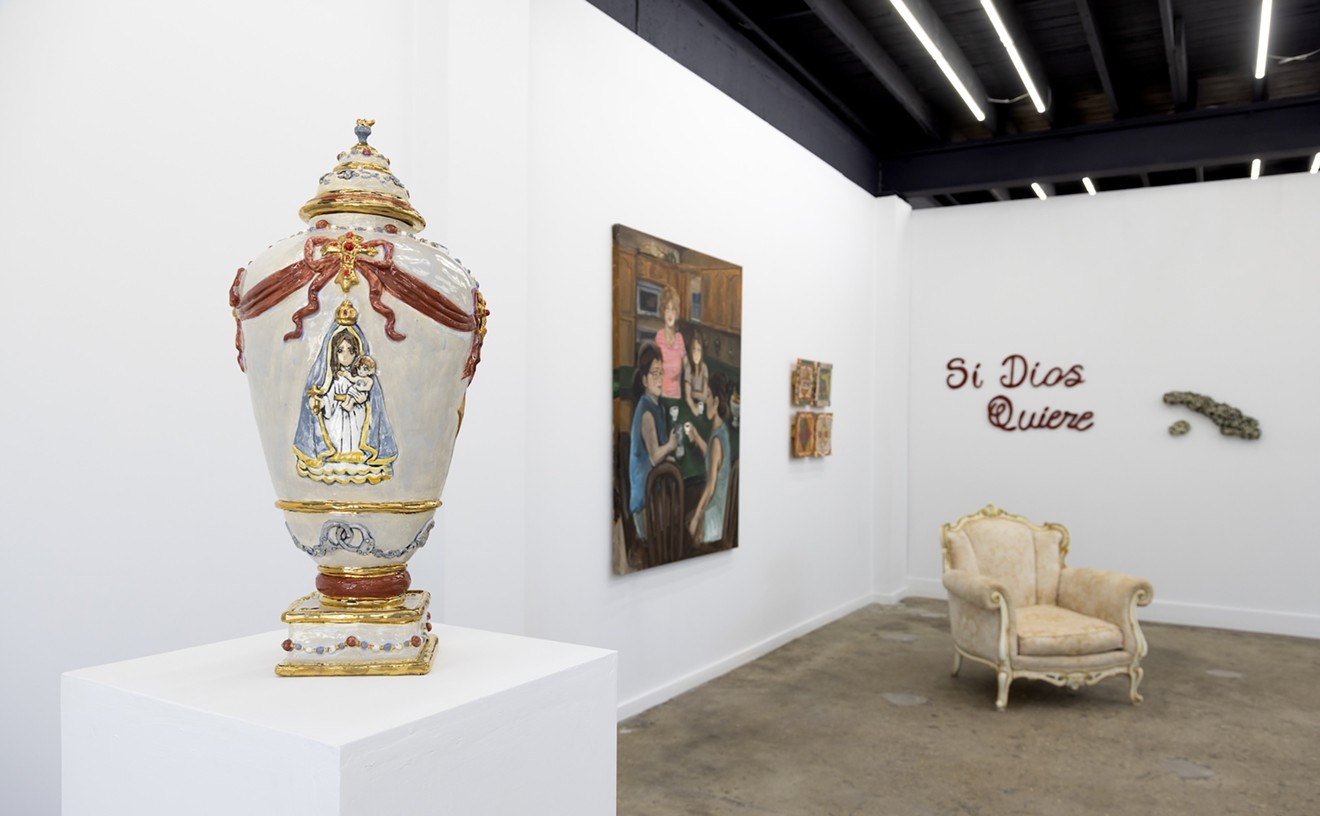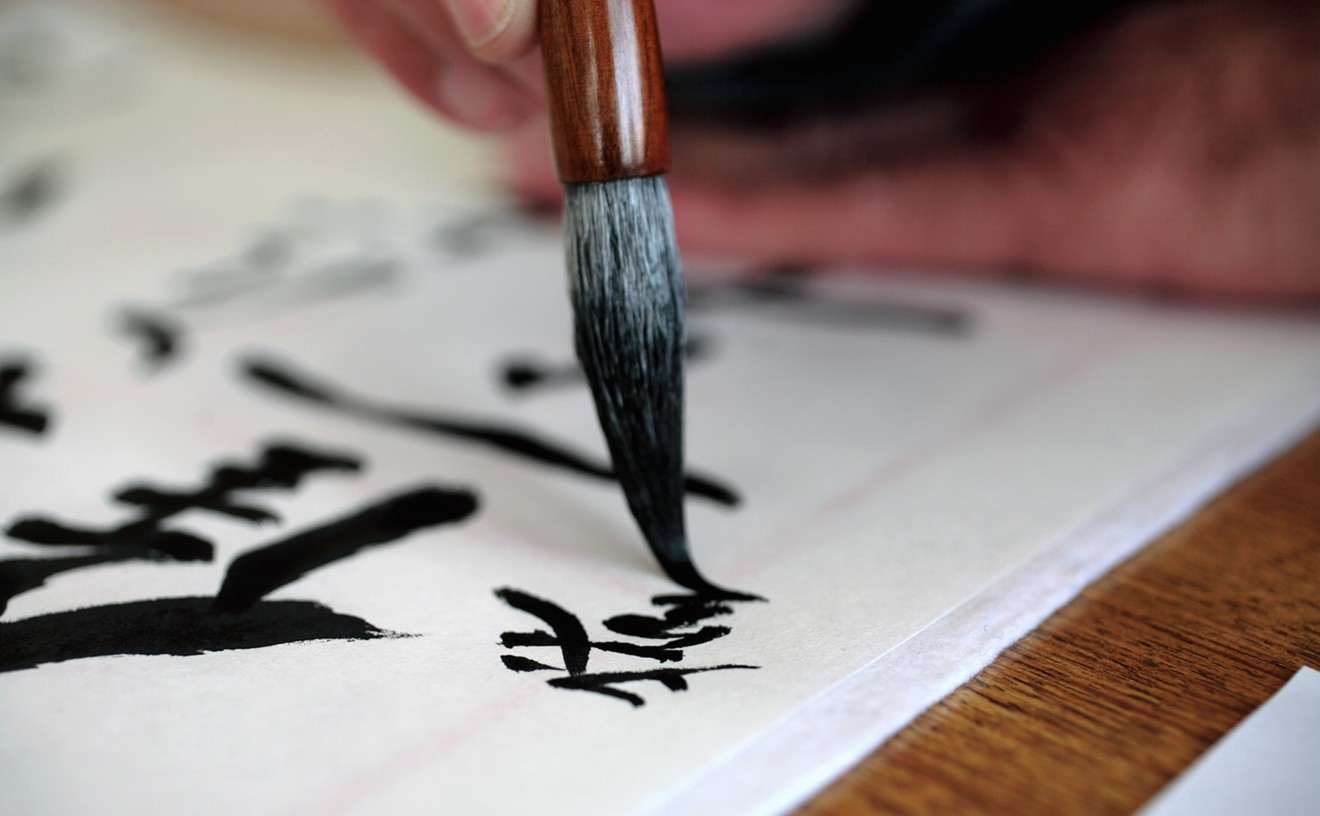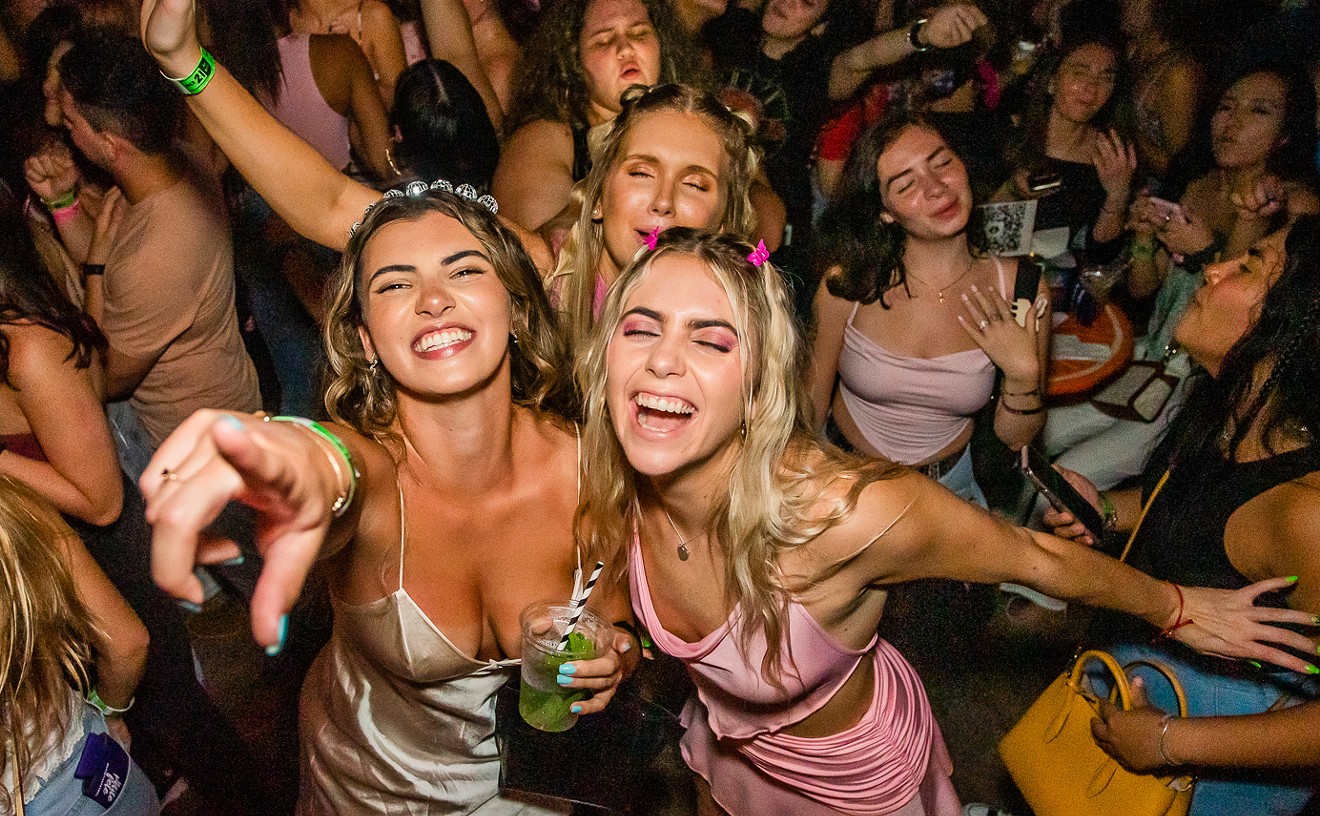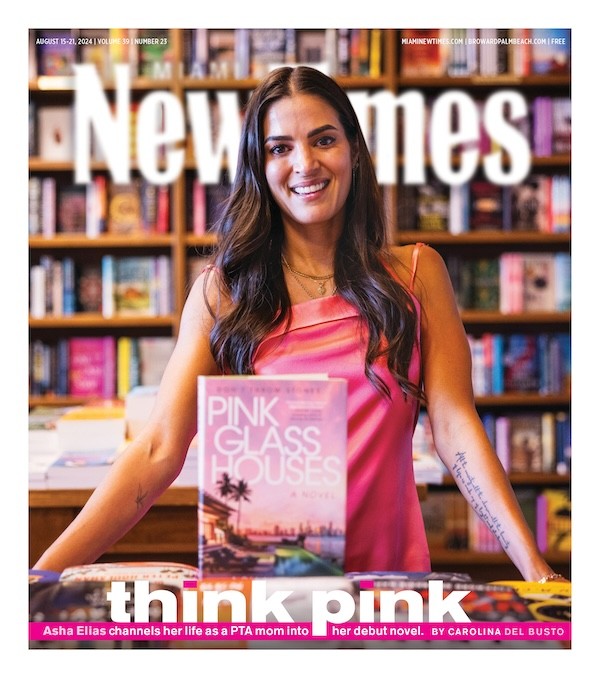The Korean pop star Psy himself raps those lyrics in a distorted deep voice on the song "Fact Assault," a collaboration with G-Dragon. Psy, of course, became a viral phenomenon in 2012 with a music video of his song "Gangnam Style," which has since reached nearly 3 billion views. Reducing the Korean experience to four questions, Psy presents a litmus test of one’s familiarity with Korean culture. But in Miami, even this basic understanding seems to be in short supply. And with the population of Korean Miamians at 0.1 percent, there’s a lot of pressure on the few Koreans here to represent.
I am a 20-something Korean-American woman. I grew up in the suburbs of Washington, D.C., in a predominantly white community and went to college in New Hampshire. After I graduated, I promised myself I'd live in a city with a diverse population and more than one option for Korean food. I moved to Boston, where my now-husband and I become regulars at Yasu, a friendly Korean restaurant in Coolidge Corner. (The restaurant, sadly, has recently closed.) We took a Korean language class together at Harvard, became friends with the instructor and her husband, and regularly chatted with them about Korean poetry over soju and persimmons. On the T, Boston's extensive public transportation system, I’d overhear snippets of Korean conversations from students, long-time residents, and tourists. Korean culture and food were always readily available. I never really craved it the way I do here in Miami.
I moved from Boston to Miami in 2015 expecting the same urban diversity but with better weather, away from confining
I’m an arts and culture writer, not a food critic. So my quest to find an authentic Korean restaurant isn't really about the food. Where there’s good Korean food, there’s also a Korean community. Let me clarify: By Korean food, I don’t mean Asian fusion cuisine. I’m looking for a family-owned joint with Korean owners. They should never charge for the banchan, the Korean side dishes that include kimchi or the rice that's served alongside the entrée. In the nearly three years that I’ve lived in Miami, I have had to drive 30 miles north, to Lauderhill's Korean restaurant Gabose, to find Korean food and Korean people.
Even then, when I walk through the door of Gabose with my husband, I'm greeted by English salutations, not Korean ones. The waiters prefer that I order the food in English. And the staff seems generally uninterested when I try to strike up a conversation in my native tongue. There, I find delicious, authentic food and I find the people, but I don’t find the sense of belonging the same way I did in our little corner of Boston. On the way back to Miami, our stomachs are full, but I'm still hungry for a cultural connection.
Last week, my husband and I went to a Central American restaurant that we often frequent. One of the servers whom we know pointed at my husband’s t-shirt, which said “Korea” with the iconography of the Korean flag. He asked if I was from Korea; we said yes. The waiter went on say that he still has not figured out a way to tell between Koreans and other Asians based on their facial features. I had an immediate memory of when bullies at school used to stretch the skin around their eyes out and tell me they could tell the difference between Korean, Japanese, and Chinese people based on the angle of the eyes. The waiter seemed to mean no harm — seemed genuinely interested in learning how to master this skill. Because I was hungry, I refrained from telling him that the practice of trying to figure out “how to tell apart Asians” is, at best, inappropriate.
Of course, one waiter's offensive remarks don't represent the views of every person in Miami. But they do represent a general lack of understanding in this city. Even Korean restaurants in Miami don't seem to encourage a nuanced cultural understanding. At Fuchai, a Chinese-Korean restaurant in Wynwood, the food was tasty and the wait staff was friendly. I didn’t meet any Koreans when I dined there, but I did see some ethnic representation. On the menus and on a huge mural on the wall of the small space, I found yellow-face caricatures reminiscent of those dating back to the mid-1800s: characters with diagonal lines for eyes, wearing conical hats, tilling mountainous farmland with huge buck-toothed smiles. I was disturbed by the anachronism and even more troubled that this type of iconography was plastered on the walls and menus of one of the only Korean restaurants in Miami.
I had a conversation with Mijee Lee, the owner of Fuchai, about the characters. Curious about my maiden name, Mijee asked if I was Korean, and we had a conversation in Konglish (a portmanteau of Korean and English, like Spanglish). Mijee told me that their initial restaurant idea was to create Chinese cuisine because she didn’t think that there was a demand for Korean food in Miami. The characters on the mural and menus were conceptualized by Gus Colors, a Wynwood artist.
“Gus [drew] our menu and he showed me and asked, ‘What do you think?’ I thought it was good because our restaurant is Chinese... I liked the concept drawing. It’s cute, fun, and comfortable... [But] it’s a little racist, right? Not all [Asians] are like that... my eyes are not like that, but it’s just a cartoon. I don’t want to take it seriously like that. Actually, [the cartoon] is so cute, so I like him.”
Lee says that since she opened the restaurant, she’s had many conversations her with guests, Asian and otherwise. But no one had brought up the characters on the mural or menus before. She was shocked that I found them offensive. “I have a lot of Asian guests. We never talk about that, just about the food, life, how’s your country,” she says. "It’s so surprising... This is just a character. If you see a cartoon on South Park, the Asian characters have a round face, hat, and eyes like that. That’s more racist than this. A cartoon is a cartoon. It was just a concept. It’s not like I’m racist, and I’m Korean.”
Lee told me that she is a recent immigrant from Korea and because that she is unfamiliar with American culture, she wasn't aware that people may react negatively to the characters on the walls and menus on her restaurant. “To be honest with you, because I [haven’t been] living in this country for many years... I don’t know the culture too much, [about] how people are thinking and the language. It makes me more scared... If people are thinking that this is racist, I am going to have a problem... I don’t want to have any problem,” she says anxiously. “[For] Chinese, Korean, and Asian people, maybe they think this racist
Speaking with Mijin challenged me to shift my perspective. As a Korean-American and an immigrant, I realized that it was my own experience with discrimination and historical knowledge of depictions of Asians in America that makes me sensitive about racial representations. My conversation with another Korean woman encouraged me to examine my own biases. This is exactly why
Some people may relate to my interpretation based on their own experiences and knowledge regarding race, but some may not. My reaction to a cartoon as an offensive racial caricature was informed by my sensitivities and historical knowledge. Nevertheless, the reality is that racism exists in America, and it’s still important to note that what was conceived as an innocent and fun cartoon may perpetuate harmful stereotypes.
Still, I know that my interpretations are not the definitive conclusions of the entire Korean experience in Miami. My intention isn't to ridicule the level of ignorance about Korean culture in Miami. It’s to draw attention to subtle and not so subtle prejudices, both personal and systematic, that exist in a city where Koreans are virtually invisible. The possibility of perpetuating stereotypes is greater and more harmful when there’s no one around or willing to dispel them.
But there's also the possibility for change. Though there is a very small population of ethnic Koreans in Miami, the concept of
Kpop Con Miami was planned to be an annual event, but I couldn’t find any evidence that it’s happened since then. Nevertheless, one of the participants at Kpop Con, a K-pop dance crew from Miami comprised of four non-Korean women, performed at OutCon 2016 in matching jackets emblazoned with their crew name, GPK, short for “Guilty Pleasure K-Pop.” And this summer, South Korean musician and fashion icon G-Dragon played at American Airlines Arena on July 25.
So, while the population of ethnic Koreans may not be getting any bigger in Miami, the Korean wave is progressively spreading with the help of social media, the internet, and the spirit of transnationalism. Of course, knowing about K-pop is not the same as respecting or understanding the experience of an entire country or culture, but it’s a hopeful step. As

